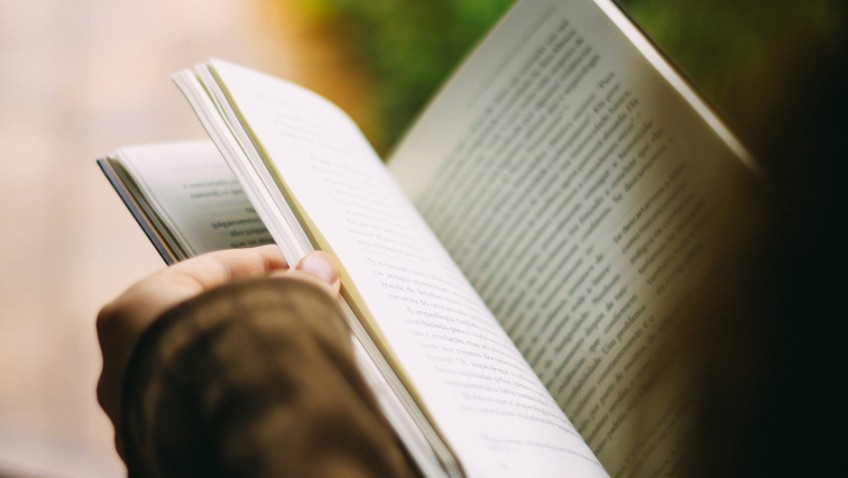ROBERT TANITCH’S ROUND-UP OF BOOKS No 6
 GALAPAGOS Preserving Darwin’s Legacy by Tui de Roy (Bloomsbury £35). It’s a harsh world of survival. The Galapagos Islands have been on the map ever since the furore caused by Charles Darwin when he published The Origin of Species in 1859. Darwin described the islands as “the natural laboratory of evolution.” The book, a celebratory record of the latest scientific discoveries, its problems and successes by a number of expert conservationists and researchers, is a dramatic story of preservation and an insight into the lives of sharks, giant tortoises, iguanas, finches, hawks, penguins, cormorants and sea lions. Rare species have been rescued against the odds of disease, climate change, oil spills and man.
GALAPAGOS Preserving Darwin’s Legacy by Tui de Roy (Bloomsbury £35). It’s a harsh world of survival. The Galapagos Islands have been on the map ever since the furore caused by Charles Darwin when he published The Origin of Species in 1859. Darwin described the islands as “the natural laboratory of evolution.” The book, a celebratory record of the latest scientific discoveries, its problems and successes by a number of expert conservationists and researchers, is a dramatic story of preservation and an insight into the lives of sharks, giant tortoises, iguanas, finches, hawks, penguins, cormorants and sea lions. Rare species have been rescued against the odds of disease, climate change, oil spills and man.
 KEEPING THEIR MARBLES by Tiffany JENKINS (Oxford University Press £25) How the treasures of the past ended up in museums and why they should stay there. Reparation, reparation, reparation. The contents of museums have become politically charged and the institutions have become more and more controversial. But making reparation can be a threat to our understanding of civilisations past. Should the Elgin Marbles be returned to Greece? Should the Benin Bronzes be returned to Nigeria? Read this well-argued book and you may change your mind.
KEEPING THEIR MARBLES by Tiffany JENKINS (Oxford University Press £25) How the treasures of the past ended up in museums and why they should stay there. Reparation, reparation, reparation. The contents of museums have become politically charged and the institutions have become more and more controversial. But making reparation can be a threat to our understanding of civilisations past. Should the Elgin Marbles be returned to Greece? Should the Benin Bronzes be returned to Nigeria? Read this well-argued book and you may change your mind.
 IMAGES OF THE ICE AGE by Paul G Bahn (Oxford University Press £30). Third edition. A record of the world’s earliest images beginning with the cave art of Lescaux, Altamira, Chauvet and other less well-known sites. It has now been updated with new discoveries from Germany, Spain (notably The cave of La Garma0, Indonesia and Egypt. Richly and fascinatingly illustrated this exploration of rocks and objects will be invaluable to students and anybody interested in pre-historic art.
IMAGES OF THE ICE AGE by Paul G Bahn (Oxford University Press £30). Third edition. A record of the world’s earliest images beginning with the cave art of Lescaux, Altamira, Chauvet and other less well-known sites. It has now been updated with new discoveries from Germany, Spain (notably The cave of La Garma0, Indonesia and Egypt. Richly and fascinatingly illustrated this exploration of rocks and objects will be invaluable to students and anybody interested in pre-historic art.
 THE FACE OF THE BUDDHA by William Empson (Oxford University Press) In 1931 the English poet and literary critic William Empson became interested in the Buddhists sculptures of ancient Japan. He lost his manuscript during World War 2. Sixty years later it was rediscovered and is published for the first time and is edited by Rupert Arrowsmith. The book is a record of his studies during his travels to China, Korea, Vietnam, Cambodia, Burma, India and Ceylon. Empson points out that the faces of nearly all the Buddhas seem to be asymmetrical. It is as if the artists were working on a theory.
THE FACE OF THE BUDDHA by William Empson (Oxford University Press) In 1931 the English poet and literary critic William Empson became interested in the Buddhists sculptures of ancient Japan. He lost his manuscript during World War 2. Sixty years later it was rediscovered and is published for the first time and is edited by Rupert Arrowsmith. The book is a record of his studies during his travels to China, Korea, Vietnam, Cambodia, Burma, India and Ceylon. Empson points out that the faces of nearly all the Buddhas seem to be asymmetrical. It is as if the artists were working on a theory.
To learn more about Robert Tanitch and his reviews, click here to go to his website








